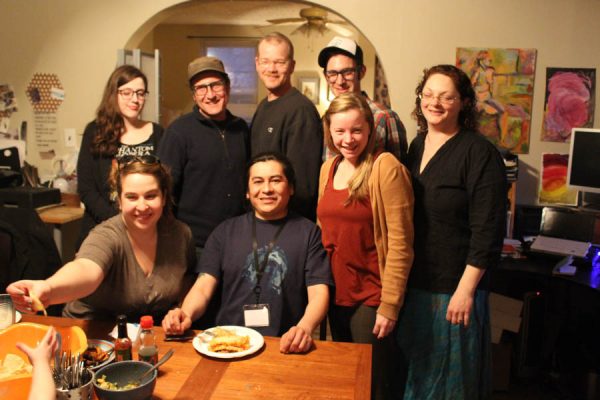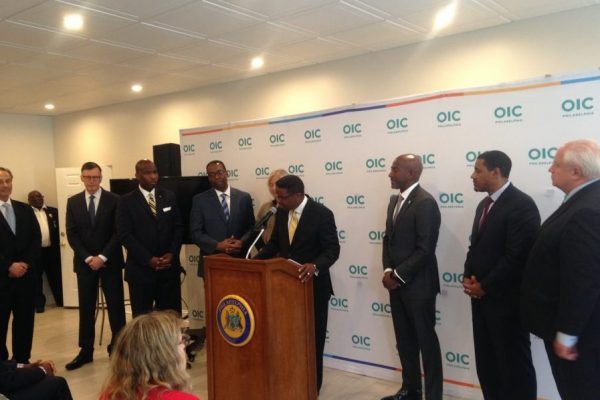Eye on Business: Kensington Quarters
The opening of a butcher shop seems like an unusual thing to be celebrating, especially on Fishtown’s Frankford Avenue. Home to an ever growing amount beer gardens, clothing stores and coffee shops, the thought of something so old-world might seem out of place. But truth, as they say, is stranger than fiction, and Kensington Quarters (1310 Frankford Ave.), part restaurant, part butcher shop, part classroom, is now open for business.
“There are people, especially in neighborhoods this old, who remember shopping like this,” Bryan Mayer, co-owner and butcher said. “This is a different shopping experience from what you are getting in a supermarket.”
The experience is a very visual one. On the far side of the counter, shoppers can watch Mayer and his team hard at work. Unlike most commercial supermarkets and restaurants, Kensington Quarters uses whole animals. The cases, rather small, just six feet each, are packed sparsely. Surprisingly, the sparseness of the cases is a crucial element for Mayer.
“We don’t have tons of cases that are fully stocked and overflowing all the time. We have what I believe is just the right amount of cases to work sustainably, just two six foot cases. Any more, I think is too much when you’re dealing with whole animals instead of just buying stuff in boxes.”
Mayer continued:
“What I want to show people who walk in is that we are dealing with a very limited amount of product. Take the pig as an example. If you take the loin of the animal, more specifically the pork chop, and cut the pork chop from the loin then you can’t have baby backs because those bones are on the pork chop. So when you walk into a supermarket see trays of pork chops and trays of baby back– when you’re working with an unlimited supply of animals– that’s what you get. But with us there is more of a give and take, we have this, but we don’t have that, and this is why.”
This restraint, rather than being a hindrance, yields some interesting results. The restaurant, as one might guess, gets all its meat from the butcher counter.
“We have to figure out what to do with the rest of the animal, the things people don’t jump at, or usually think to get,” executive chef Damon Menapace said. “We’re trying to show that not only is the whole animal usable, but that it’s good and that it can be treated in an interesting way.”
“Last week we were running a smoked head cheese. So we took four pig heads, whole, put them in a salt rind for a couple days, boiled them till tender, picked all the meat off, ground the meat and put it in a sausage casing. Those casings were then smoked. By the time they hit the plate they were fatty, smokey and delicious,” Menapace said. “Other places do a head cheese, but they have ears and skin in them and frankly, that’s not appealing to most people. Moreover, those places are buying heads to make head cheese, whereas I’m making head cheese because I had four pigs’ heads that I needed to do something with.”
This spirit of creativity inspires not only the meats but all aspects of the menu.
“We have a really awesome bread program,” Menapace added. “We’re making two naturally cultured leavened breads from scratch, which means that we’ve started growing our own yeast. We’re cooking them in-house in our brick oven.”
In the back of the restaurant, around the edges of the patio, the staff is raising herbs that will be garnishing the breads and the meats. Most of the wines that will be paired with the dishes are organic, non-GMO and locally produced.
“Butchering is the art of deconstructing. You’re taking this muscle from an animal, and with very little else you’re trying to make it look appealing,” Mayer said.
An excellent summation of the whole thing, really. A few elements, done from top to bottom, from scratch. Done simply, done beautifully, done well.






